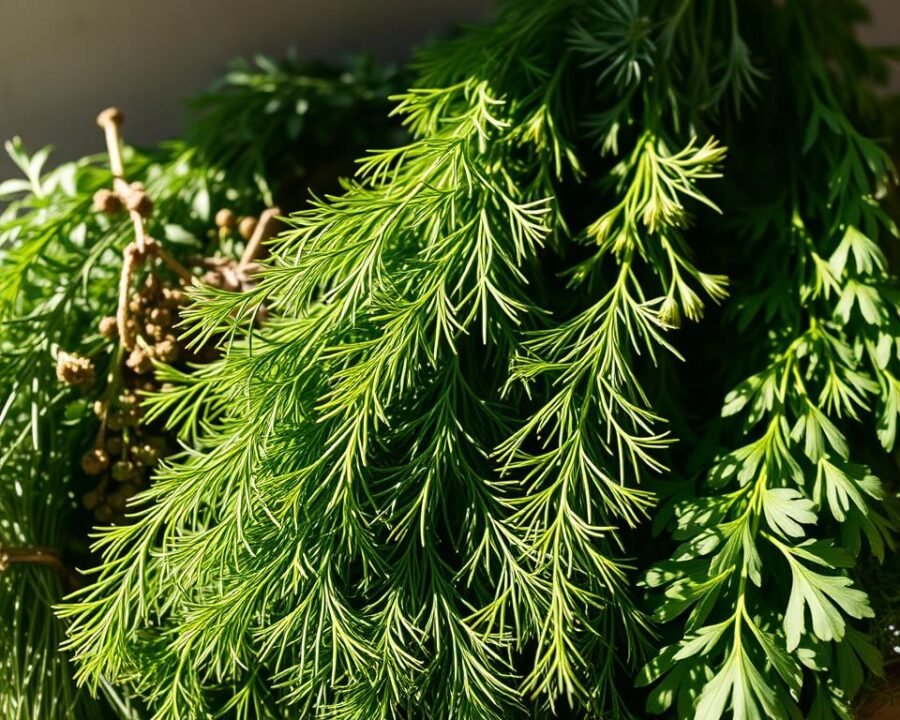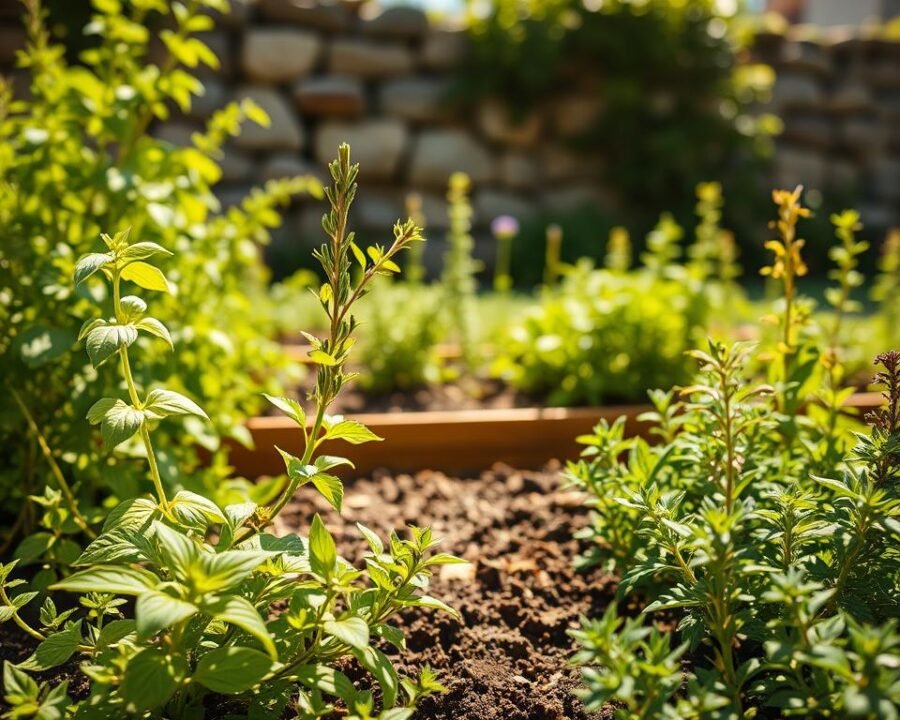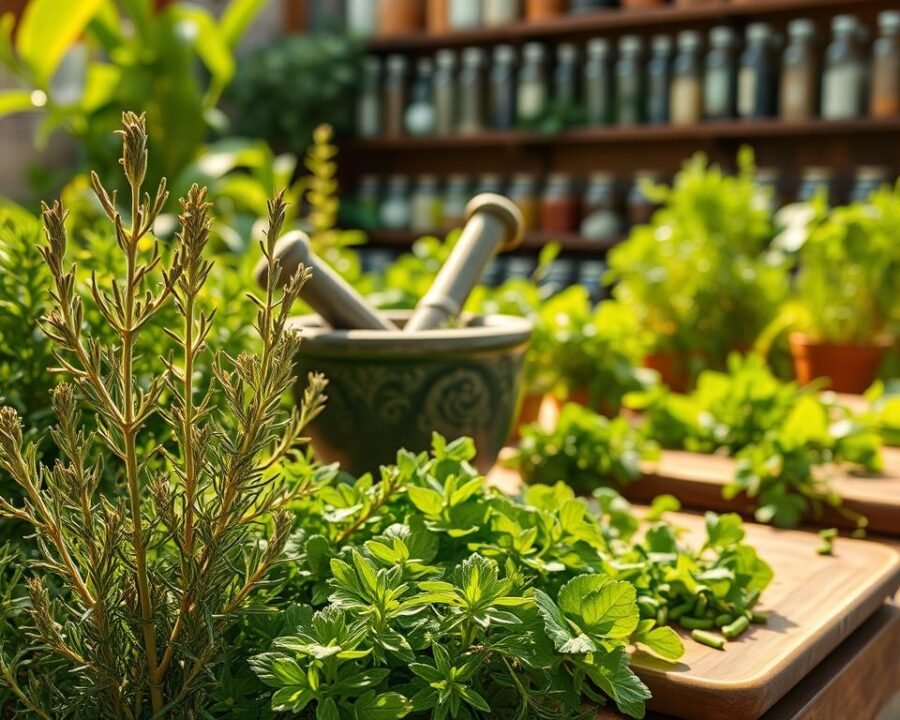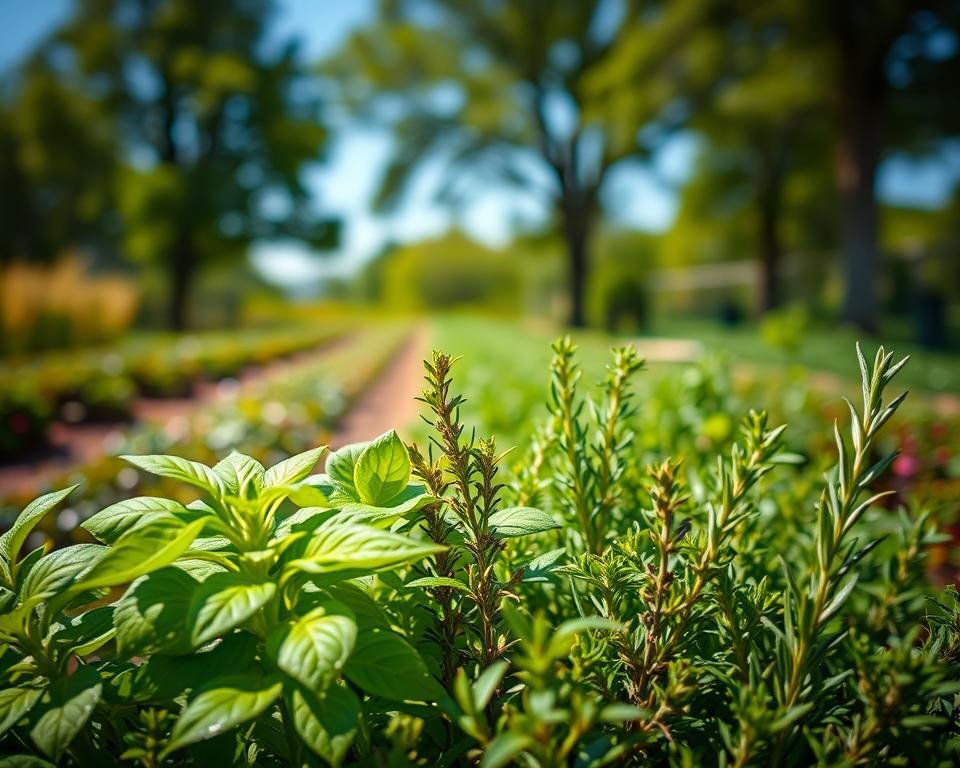There’s something magical about stepping outside and snipping fresh leaves straight from the soil. The aroma alone can turn an ordinary meal into something extraordinary. Whether it’s the peppery bite of basil or the earthy warmth of rosemary, homegrown flavors elevate every dish.
Even a small windowsill or balcony can become a thriving green space. Many varieties thrive with minimal care, making them perfect for beginners. Plus, freshly picked greens pack more nutrients than store-bought ones—sage alone contains over 150 polyphenols!
Ready to explore our top picks? From versatile basil to tangy dill, each plant brings unique flavors to your kitchen. Let’s dig into the joy of growing something delicious.
Key Takeaways
- Freshly picked herbs enhance meals with bold flavors and aromas.
- They grow well in small spaces, ideal for urban settings.
- Homegrown varieties offer higher antioxidant levels.
- Beginner-friendly options make gardening accessible.
- Each herb has distinct culinary uses, from garnishes to main flavors.
Why Grow Your Own Herb Garden?
Fresh flavors are just a snip away when you cultivate your own greens. A small investment in seeds or starter plants pays off quickly. For example, a $3 basil plant yields months of harvests, while store-bought bunches cost $3 each time.
Homegrown varieties pack more punch. Unlike dried supermarket options, freshly picked leaves retain bold flavors and 150% more antioxidants. Imagine garnishing dishes with vibrant, just-cut sprigs—your kitchen will smell incredible.
Many varieties thrive with minimal effort. Mint and chives spread eagerly, even in small pots. Just provide 4 hours of sunlight and well-drained soil. Regular trimming keeps plants bushy and productive.
Gardening itself offers perks. Studies show it lowers stress levels. Herbs like rosemary release *calming* scents, doubling as natural aromatherapy. Plus, they fit anywhere—balconies, windowsills, or tiny backyard plots.
| Feature | Homegrown | Store-Bought |
|---|---|---|
| Cost per harvest | $0.10 (after initial $3) | $3 per bunch |
| Flavor intensity | High (fresh) | Low (often dried) |
| Maintenance | Easy grow | None (pre-packaged) |
Whether you’re saving money or savoring freshness, starting a garden is a great way to enrich daily meals. With so many easy grow options, anyone can enjoy the rewards.
Best Herbs for Herb Garden You Need to Try
Transform simple recipes with the bold flavors of homegrown varieties. Each plant offers unique culinary perks, from aromatic garnishes to starring roles in dishes.

Basil: The Versatile Star
Bright green leaves add a peppery sweetness to pasta, salads, and sauces. Its fast growth makes it ideal for beginners. Pinch back stems to encourage bushier plants.
Rosemary: Aromatic and Hardy
This woody perennial thrives in dry soil and full sun. Use its pine-like needles to season roasted vegetables or bread. A single sprig infuses oils with earthy depth.
Chives: Delicate Onion Flavor
Snip slender green stalks over baked potatoes or creamy soups. Their mild bite pairs well with eggs and dips. Purple blooms attract pollinators too.
Sage: Earthy and Antioxidant-Rich
Velvety leaves elevate poultry and stuffing. Studies highlight its high antioxidant levels. Plant near cabbage to deter pests naturally.
Mint: Refreshing and Prolific
Grow in containers to control its spread. Fresh leaves brighten teas, desserts, and Middle Eastern dishes. Crush a leaf for instant aromatherapy.
Dill: Feathery and Fragrant
Its wispy fronds garnish Scandinavian gravlax or pickles. Harvest seeds for homemade spice blends. Avoid transplanting—direct sowing prevents shock.
- Pair dill with cucumbers to repel pests organically.
- Freeze sage leaves in olive oil for winter use.
Essential Growing Tips for Thriving Herbs
The secret to vibrant plants lies in mastering a few simple techniques. Most Mediterranean varieties crave full sun, while others like mint adapt to *sun partial shade*. Match each plant’s needs to its spot for optimal results.

Water wisely—check soil dryness an inch down before watering. Overwatering harms roots, so prioritize *well-drained* soil. Terracotta pots help Mediterranean types dry evenly between drinks.
Boost *new growth* with monthly diluted fish emulsion. For *seeds*, soak parsley overnight to speed germination. Direct sowing works best for dill, avoiding transplant shock.
Rotate containers weekly for even light exposure. Prune thyme and oregano to encourage bushiness. Snip regularly to keep plants productive and compact.
- Light: 6+ hours of full sun for rosemary; 4 hours for basil.
- Soil: Mix sand into potting soil for *well-drained* beds.
- Feeding: Fertilize lightly—overfeeding reduces flavor intensity.
With these tweaks, even beginners can cultivate lush, aromatic greens. Happy plants mean bolder flavors in every dish.
Creative Ways to Use Your Homegrown Herbs
Elevate everyday meals with creative twists using freshly picked greens. Blend cilantro stems into zesty chimichurri for grilled meats, or freeze chopped leaves in olive oil cubes for instant flavor boosts.

Whip up herb butters by mixing softened butter with minced rosemary or thyme. Spread on warm bread or melt over steamed veggies for a rich finish. For salads, toss whole basil leaves with strawberries and balsamic glaze.
Infuse oils and vinegars for dressings and sauces. Try tarragon-garlic vinegar or rosemary-infused honey—perfect for sore throats. Drizzle over roasted carrots or stir into hot tea.
| Idea | Best Herb | Storage Tip |
|---|---|---|
| Pesto | Basil | Freeze in jars, top with oil |
| Herb Salt | Thyme + Sage | Dry mix with sea salt |
| Dessert Garnish | Mint | Use fresh within 2 days |
- Make basil-lemon sorbet for a refreshing summer treat.
- Dry thyme and lavender for homemade herbes de Provence.
- Steep sage in caramel sauce for an earthy dessert twist.
Conclusion
Nothing beats the joy of harvesting fresh leaves right before cooking. A thriving herb garden transforms meals with vibrant, just-picked flavors. Start small—a sunny windowsill kit is all you need to begin.
Share your progress with us! Tag your herb garden photos, and we’ll cheer your harvest. For more tips, subscribe to our channel. Let’s grow together, one sprig at a time.
